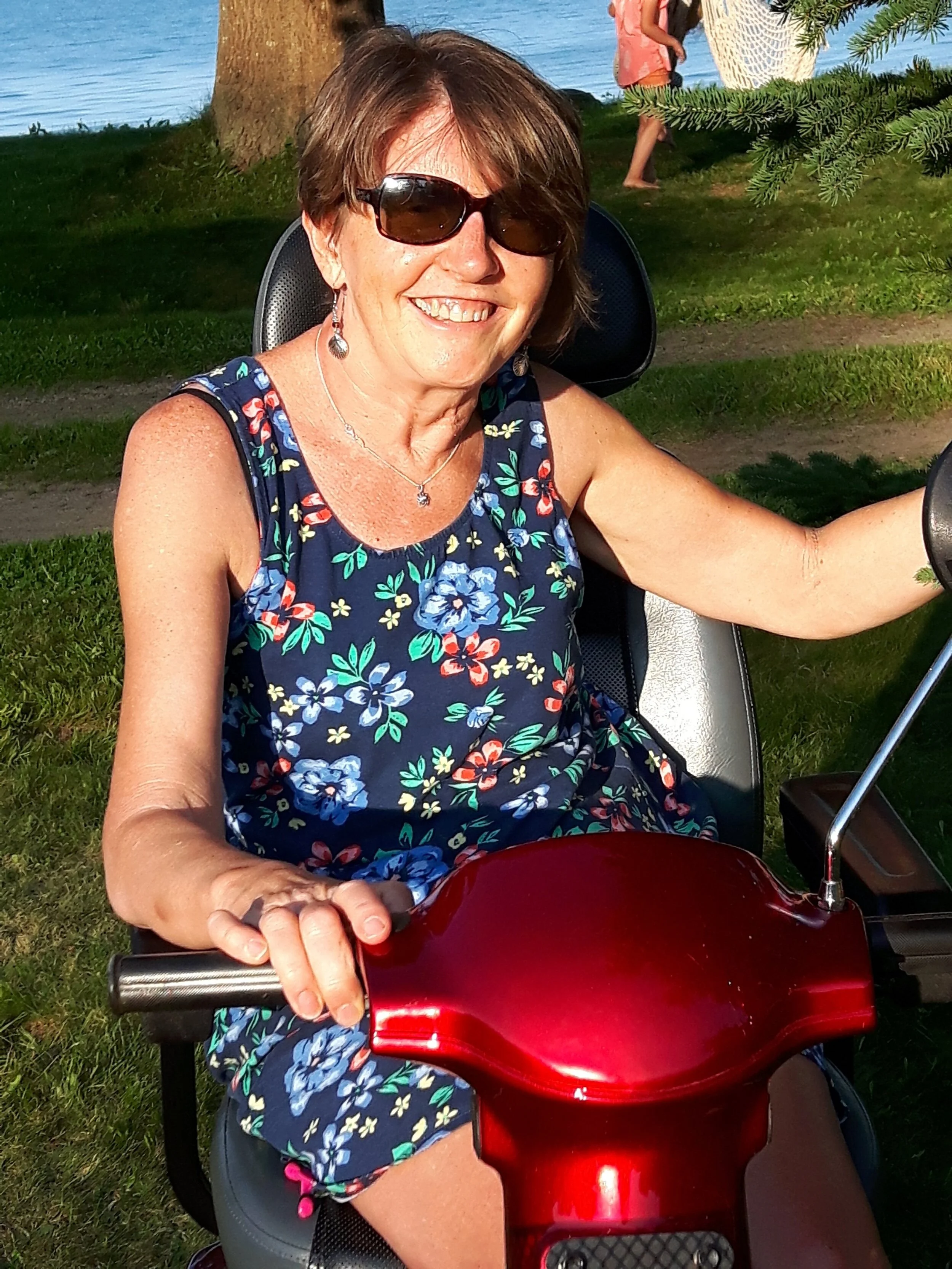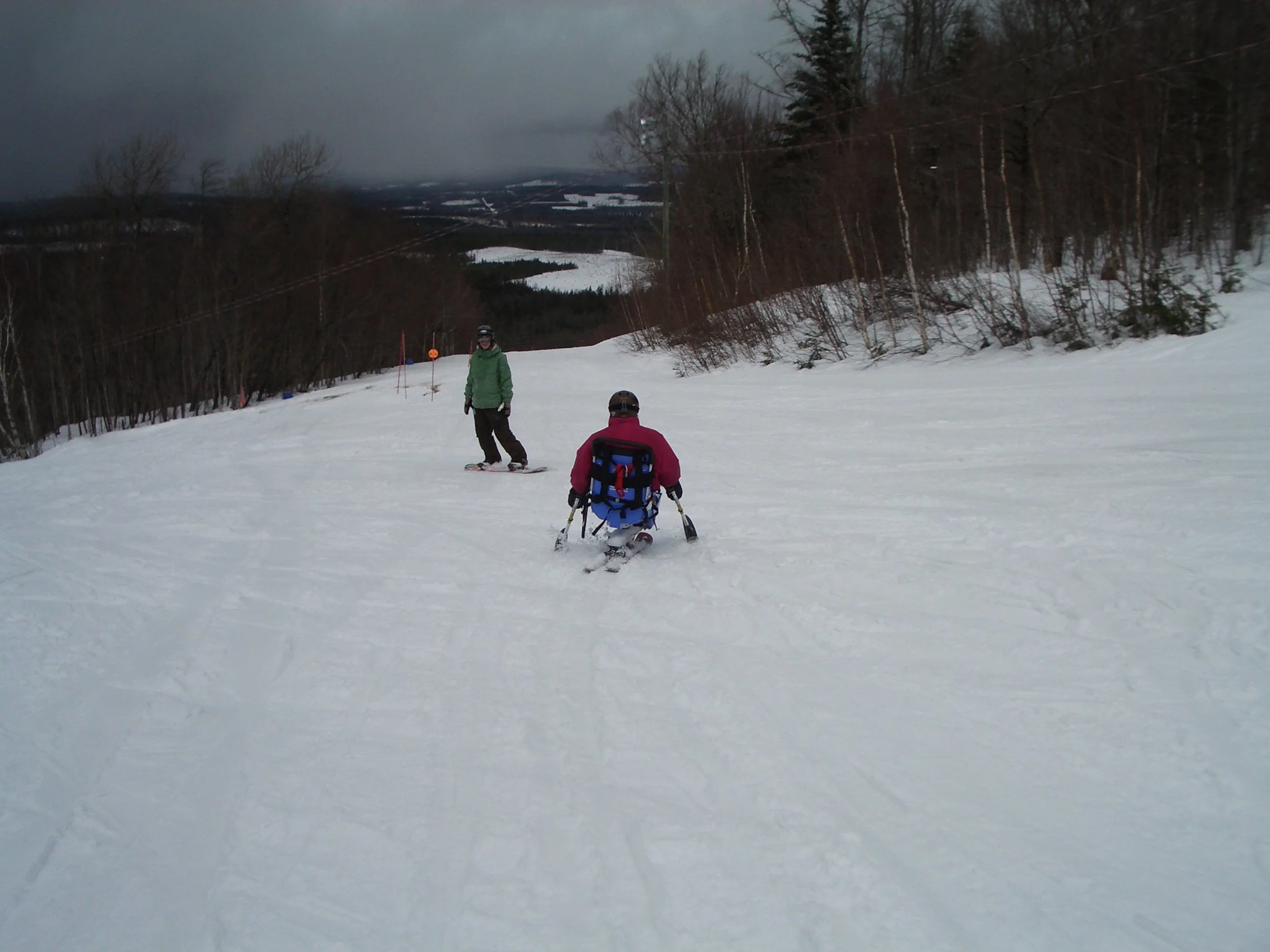How Linda Scott makes movement a priority
For decades, Linda Scott’s family mistakenly believed she had cerebral palsy. Linda thought the same until, at the age of 50, she was properly diagnosed with ARSACS, a neurological disorder that affects a person’s motor skills and spinal cord. It has resulted in Linda’s eventual use of a motorized wheelchair.
Linda shares her story of staying active in the hopes of motivating Nova Scotians to “move whatever they can, as much as they can.”
Mobility challenges
Linda Scott lives in Canard, N.S. A retired dietician and a diabetes educator, Linda has made staying active a lifelong priority, even though mobility has become increasingly more difficult for her.
“When I was 28, I started using a cane. Then at 33, I needed a walker, until my mid-40’s. After that, I went to a wheelchair. I’ve used a power wheelchair now for the past 10 years,” Linda said.
Despite these progressive challenges, Linda still makes physical activity a priority in her life.
Start with stretching
Linda is a big believer in the benefits of stretching, which is a great, gentle way to start moving more. She encourages people to do a few stretches each day, at home or work. She advises to “meet yourself where you are,” and start small so you don’t injure yourself.
“When you move, it’s a release. You just feel better. If all you can do is sit and move your neck, well then, your neck feels better,” said Linda.
If you want to try to be more active, it’s a matter of taking small steps towards that goal. Stretching is a good first step.
NS Walks
Linda is passionate about helping others to get started and to get moving. She serves on the advisory committee of Hike Nova Scotia’s NS Walks program. No matter your level of mobility, everyone is welcome to join in the fun and be part of this special social scene which promotes staying active.
“Many people have said to me, ‘I would like to walk [or wheel], but I don’t have anyone to walk with. Sometimes you need that extra push or that buddy. That ‘buddy’ is what NS Walks gives to people. Their volunteer leaders put small groups of people together to go for walks,” Linda said.
NS Walks has walking leaders in communities across Nova Scotia. You can participate even if you haven’t gone for a walk or wheel in a long time.
“It allows people who haven’t been active until now to say, ‘Well, maybe I can do that.’ So now you have people that you will eventually count as friends.”
Social scene
Meeting people is a big side benefit of trying new things and moving more. The social aspect of movement is empowering.
“Years ago, I went to a health-care tai chi session in Halifax. I was the only one with a walker. There was another gentleman in a wheelchair, and his activity level and what he could do was very limited. [But] he went there with other people, and to me, that’s just as important [as the exercise].”
Social interaction helps decrease feelings of loneliness and isolation. “[Being active together] makes people connected. It gives you a sense of belonging,” Linda said.
Find your passion
Linda finds that sense of community when she hits the slopes. She is an avid skier and has also been a coordinator with Canadian Adaptive Snowsports Nova Scotia. The association offers adaptive ski and snowboarding equipment for free at many of Nova Scotia’s ski hills.
“For someone using a wheelchair, you can sit in a ‘sit-ski’ and go down the hill. If you’re like me, you need another person who will tether you and follow behind to make sure you’re safe,” Linda said. “You’re outside. You’re in nature. It makes you feel better. [My advice] for everybody is to get out in the fresh air.”
It’s an important message. Whether you’re adventurous like Linda, walking or wheeling around the block for the first time in weeks, or playing with the kids or grandkids, you’ll reap the benefits if you make your move at your own pace and comfort level today.




